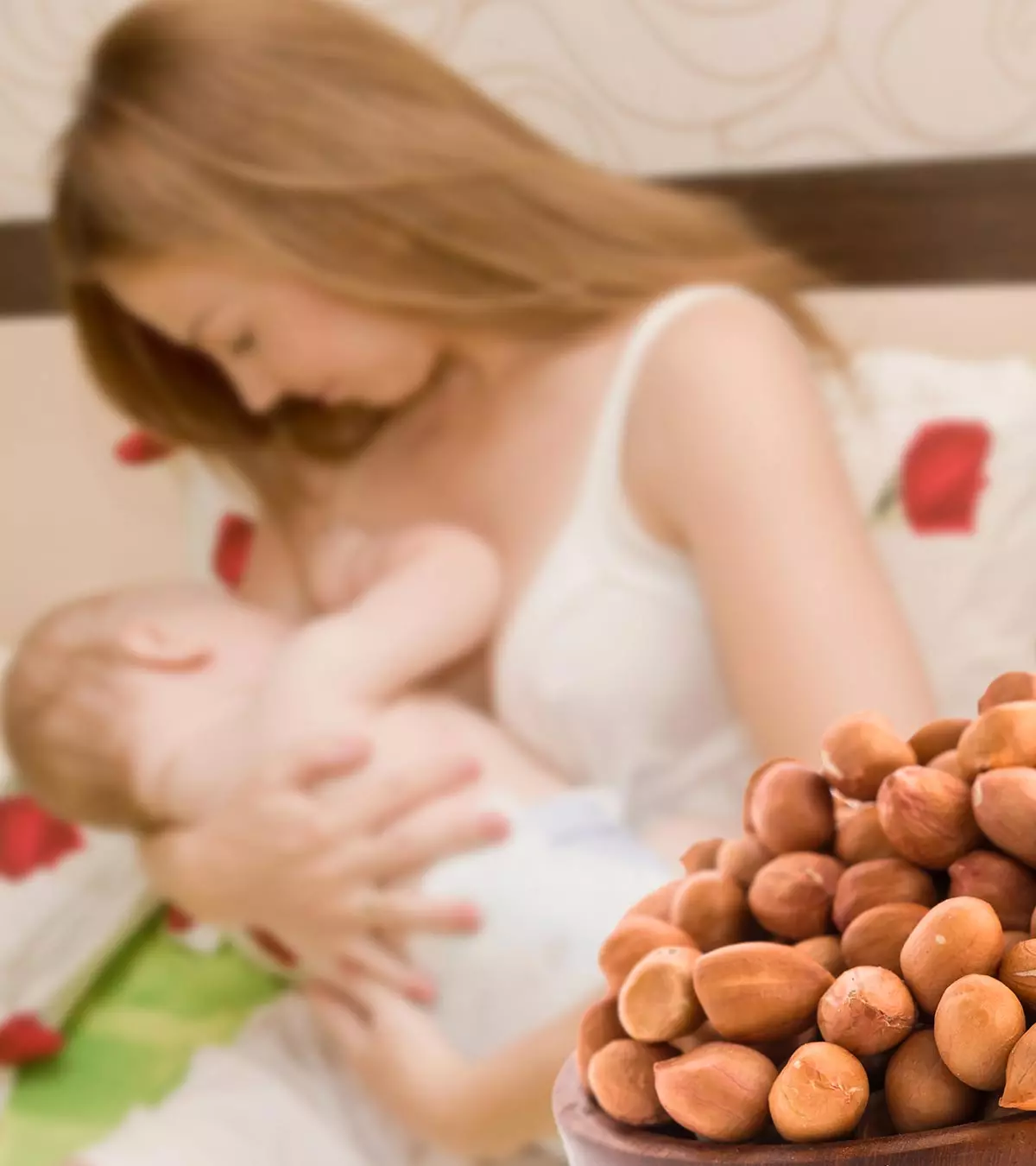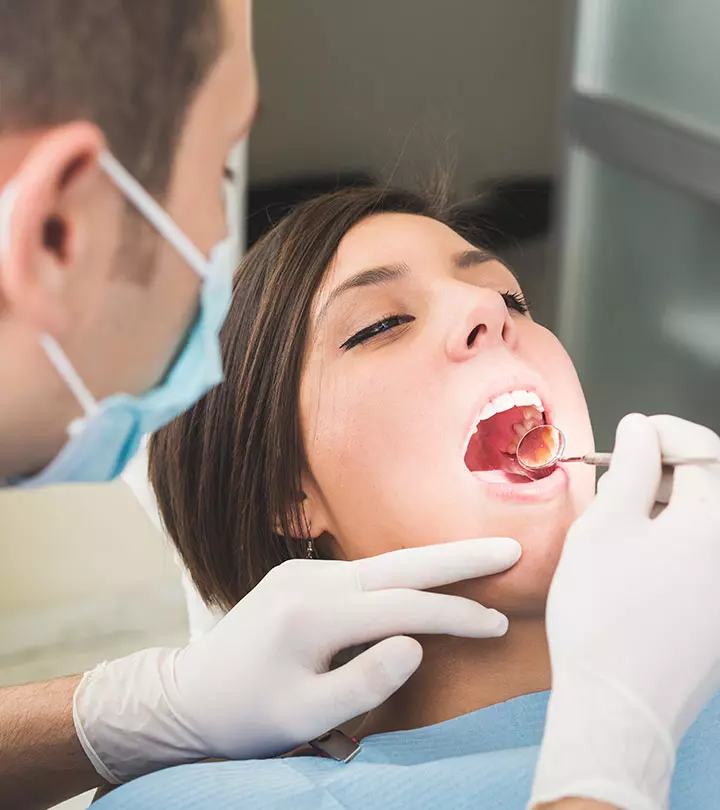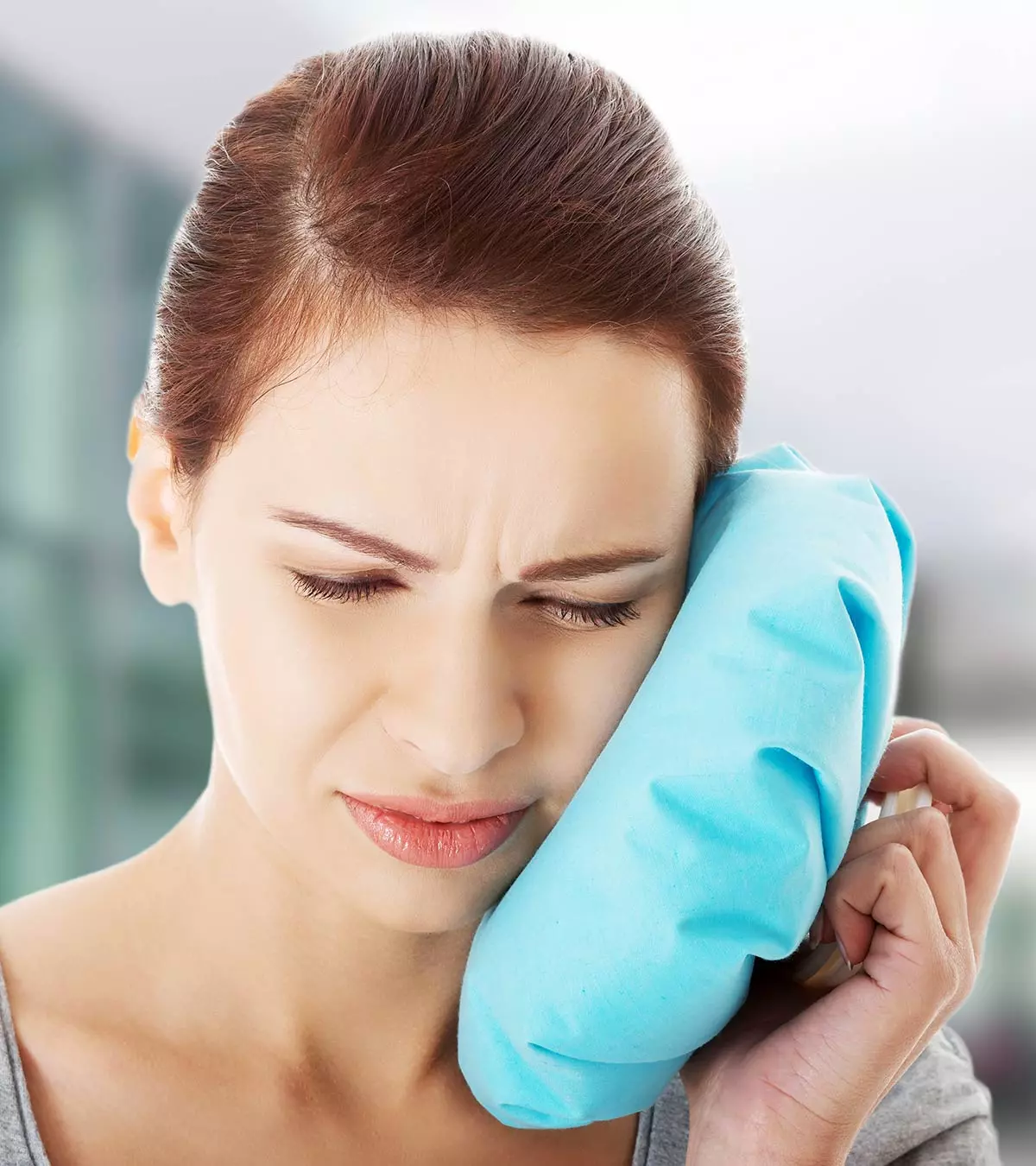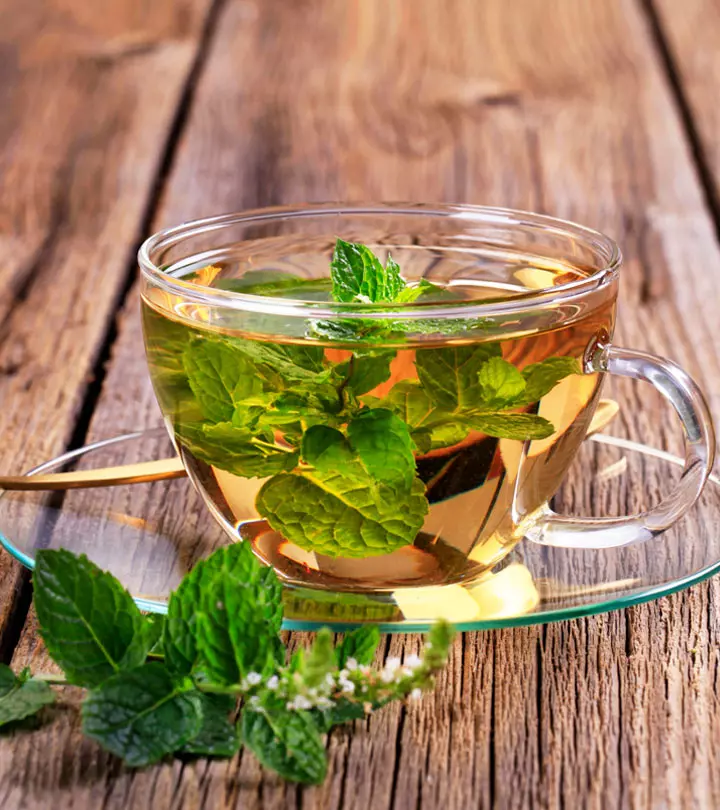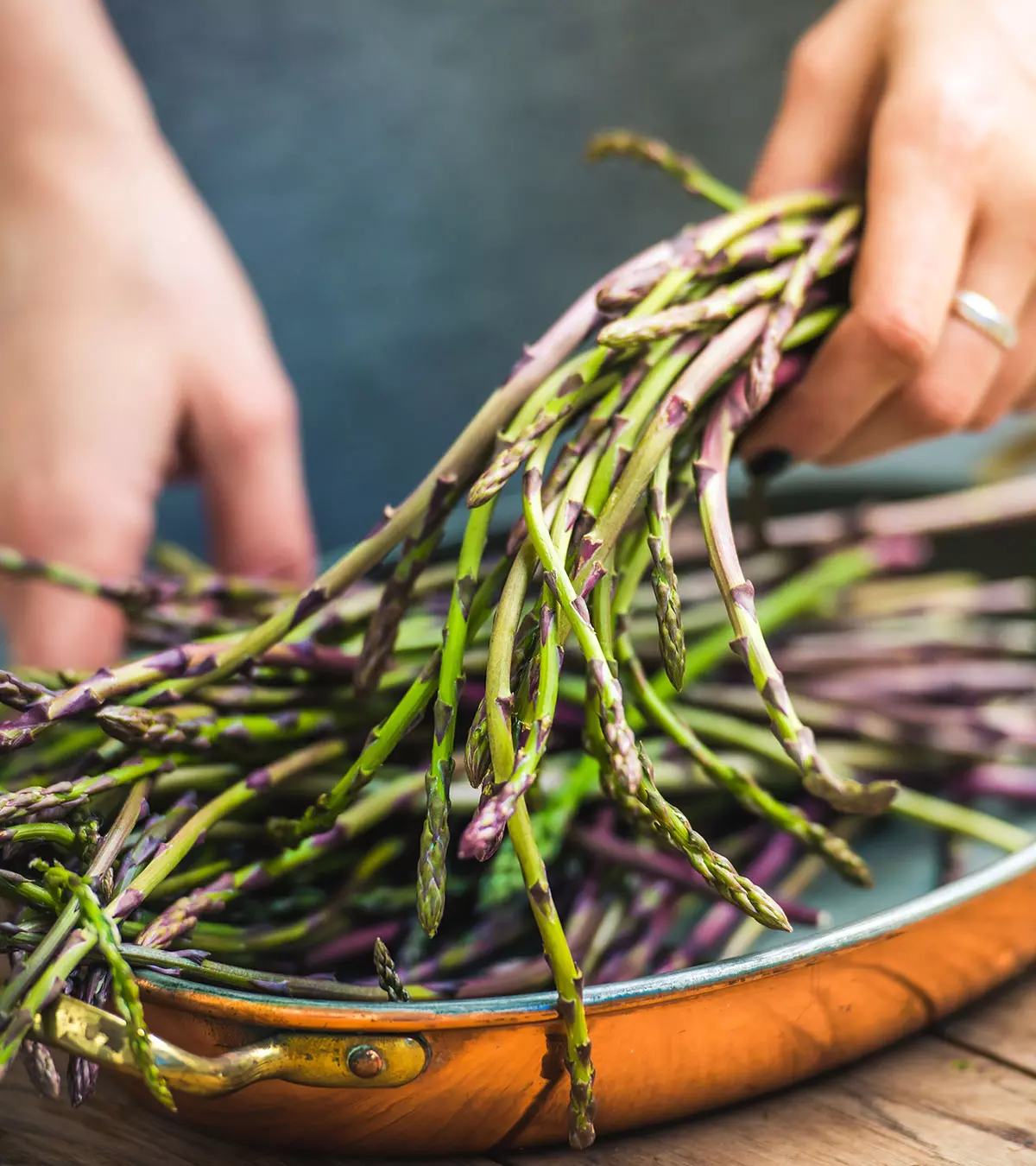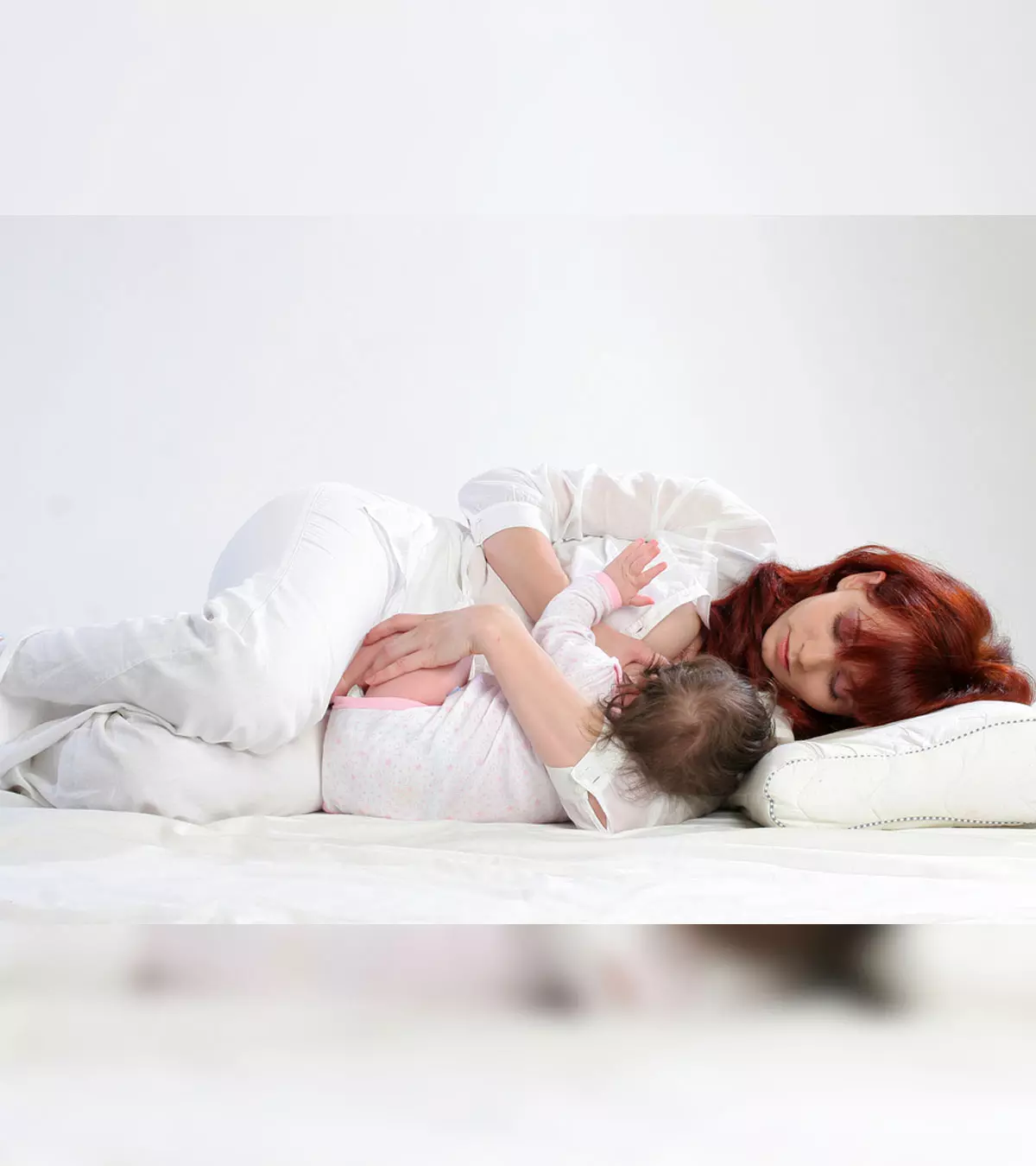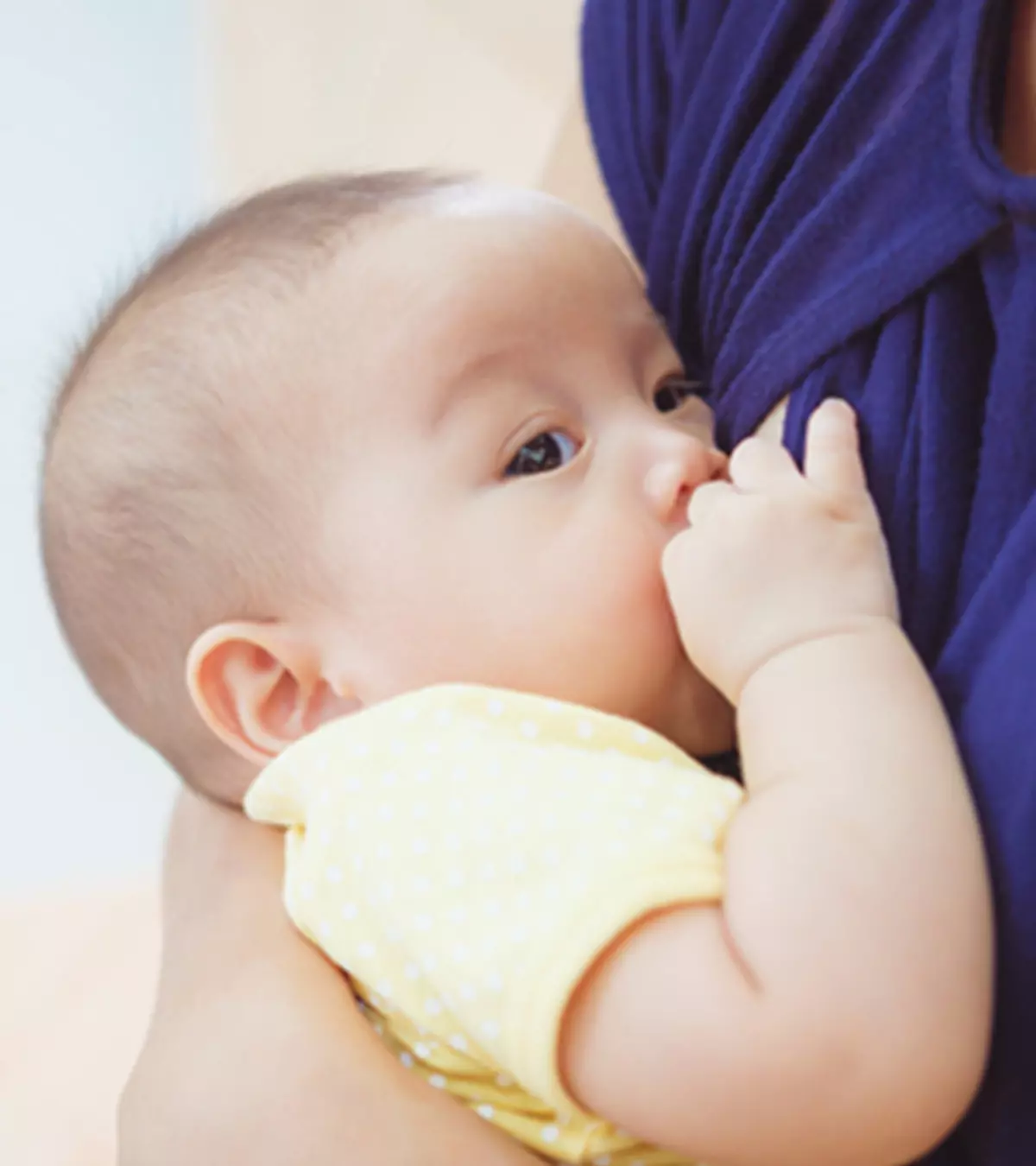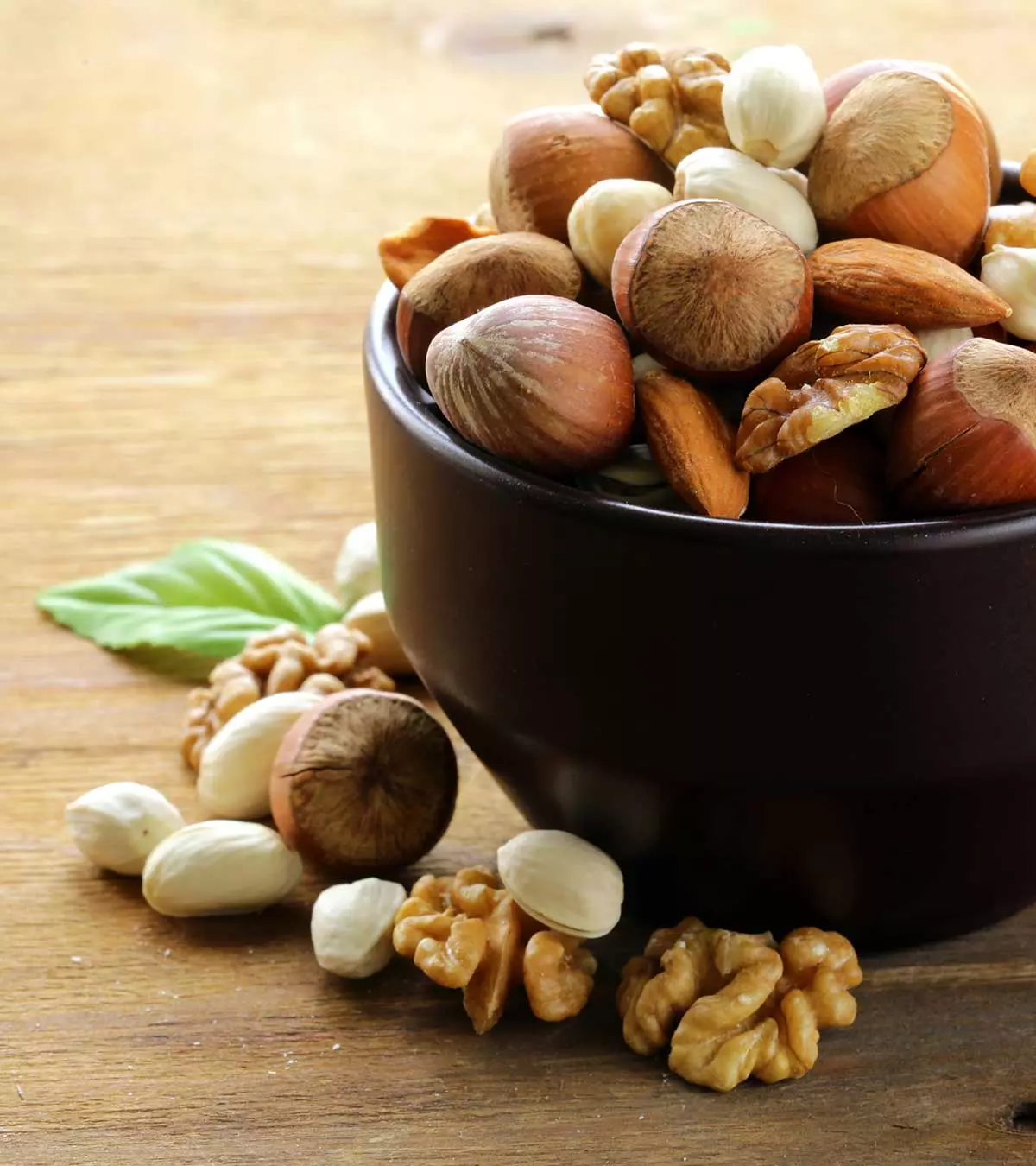
Image: iStock
It is not uncommon for new mothers to experience itchy breasts while breastfeeding. Itchy breasts may occur due to various factors, from hormonal changes to various skin conditions, and knowing the probable reasons can help you address the issue more effectively. It is one of the many other problems of breastfeeding that may bother first-time mothers. At times, it may interfere with breastfeeding. Moreover, pre-existing sore nipples can lead to increased breastfeeding pain during the process of latching, while nursing. However, breastfeeding is essential, especially for the first six months of the baby’s life, and therefore if itchy breasts are bothersome, you must consult your doctor. Read this post to know more about the causes, treatment, and prevention of itchy breasts during pregnancy.
Key Pointers
- Experiencing itchy breasts during pregnancy is a common occurrence.
- Itchy breasts during breastfeeding mostly happen due to eczema, mastitis, or thrush.
- Wiping the nipple after feeding, using moisturizer, and wearing loose clothes can help deal with the symptoms.
- If the itchiness is accompanied by severe pain or a lumpy feeling inside the breast, consult with the doctor immediately.
What Causes Itchy Breasts In Breastfeeding Mothers?
There are several reasons why your breasts can get itchy during lactation. Here are the common ones.
1. Thrush

Thrush is a yeast infection of the nipples. The biological name of yeast is Candida, and it is a type of fungus. Candida is usually harmless and found in various parts of the body (1). But the fungus can multiply and cause infection in the moist parts of the body like those around the nipple. Thrush is often the common cause of itchy breasts and nipples among lactating mothers.
Dr. Daniel Gomez, a board-certified obstetrician and gynecologist from Miami-Fort Lauderdale Area, says, “Symptoms of nipple candida infection (yeast infection) include sore nipple or burning pain in the affected breast, especially if the mother notices a white film in the infant’s mouth known as infant thrush. Symptoms can be confused with other common findings, so the diagnosis can sometimes be difficult. The decision to treat the mom for topical yeast infection of the nipple can be made together with the patient at her physician’s office.”
Symptoms:
- Yeast primarily affects the nipple and the areola region, which tend to stay moist. Itchiness of the nipple is accompanied by a burning sensation or a pins-like pain, especially after you breastfeed the baby (2).
- You may also experience a throbbing pain, deep in the breast tissue.
 Quick fact
Quick factIn some cases of thrush, the baby’s tongue has a layer/coating of white material. They may also have a yeast diaper rash. You may have gotten the infection from the baby or may have transmitted the disease unknowingly as you may have passed on vaginal yeast infection during vaginal delivery.
2. Mastitis
Mastitis is the engorgement of the breast due to the retention of the milk in the milk ducts (3). Bacteria can enter the milk ducts through pierced or cracked nipples and infect the milk ducts and the fatty tissue, thus causing a breast infection (4). Due to a bacterial infection, you might experience clogged milk ducts, which can progress to blocked milk ducts in severe cases.
Symptoms:
- Difficulty in expressing milk; high-grade fever; flu-like symptoms that don’t resolve with ibuprofen are some of the other symptoms you notice along with itchiness.
- The breast tissue will also feel warm and reddened while experiencing breast discomfort.
3. Eczema
Eczema can affect the breast skin and nipples too. Eczema is a group of diseases that can cause inflammation, itchiness, and redness of the skin (5). One category of eczema, which is medically called dermatitis, is contact dermatitis (6). This type of dermatitis can affect the breasts, due to repeated friction caused by breastfeeding (7).
Symptoms:
- Eczema can lead to dry and sensitive skin, prone to itching. The itch is excruciating, and the more you itch, the worse the condition gets, and it might result in irritated skin.
- If eczema is on the nipple and areola, you will notice areas of dry and flaky skin, also sometimes known as nipple eczema.
- Eczema is non-contagious, so you need not worry about transmitting it to your baby.
4. Stretch marks

Your breasts are filled with milk during lactation, which can cause the skin around them to expand rapidly and form stretch marks that can get itchy (8).
Symptoms:
- Fine pink lines on the breasts.
- The skin stretches and becomes dry and irritable. Moisturizing the skin helps alleviate the condition.
5. Skin infections
Many skin infections can cause itchiness. A few examples are scabies and ringworm that can affect skin on the breasts too (9) (10).
Symptoms:
- Scabies can cause fine rashes with red lines that indicate the burrowing path of the scabies mite. These symptoms are most likely to be present around the breast (11).
- Ringworm is a fungal infection and not caused by a worm. It leads to the formation of circular rashes in warm and moist places of the body. The skin under the breast is a common place for ringworm.
If the itchiness is due to any of the conditions mentioned here, treating them helps reduce the itchiness of the skin.
6. Heat rash
Heat rash or prickly heat is a harmless skin rash that causes itchy breasts. This rash commonly occurs under or over the breasts due to the accumulation of sweat (12).
Symptoms:
- Appearance of small clear blisters
- Prickling sensation
- Irritating itch
- Redness
- Mild swelling in the affected area
Other than these, the milk ejection reflex, also known as the let-down reflex, can also cause transient itching in the nipples or breasts. However, if you are experiencing itching that lasts several minutes or longer, it isn’t due to the let-down reflex.
When To See A Doctor For Itchy Breasts?
“Mild to moderate symptoms can be managed with a topical moisturizing lotion that helps with itching associated with breast engorgement. Severe symptoms, the ones that do not improve with initial therapies, or other concerning symptoms such as a rash or ulcerations need to be evaluated by a doctor,” opines Dr. Gomez.
opines Dr. Gomez.
Several cases of itchy breasts require no formal diagnosis or treatment. But in some scenarios you must get yourself check by the doctor:
- Itchiness interferes with your ability to breastfeed. You are unable to breastfeed properly to the extent that the baby has to miss some feeds and remain hungry.
- You have severe breast or nipple pain along with itchiness.
- There is blood, yellowish or clear liquid (different from milk) oozing from the nipple.
- You feel a hard lump on your breasts.
- The breasts have changed their shape. The nipple is extremely itchy, reddened, and has changed its shape.
How To Treat Itchy Breasts When Breastfeeding?
The treatment of itchy breasts depends on the fundamental cause of the condition. Most cases require minimal intervention and can resolve on their own. However, some severe cases will require medication. Treatment options for such conditions include:
- Remedial medication: Your doctor can prescribe antifungal medicines, which are safe for breastfeeding moms, for the treatment of thrush (13). If you have scabies, then you will have to observe a treatment regime with medicines that kill the scabies mite. Your baby may also be checked for the symptoms since the scabies mite can transfer through skin-to-skin contact.
- Antibiotics: If you have a bacterial infection of the breast, then you will need an antibiotic course. The medicines will be compatible with breastfeeding and will have no impact on the baby’s health (14).
- Creams and lotions for dermatitis: If you have eczema, then the doctor can suggest creams and lotions that work at subduing the condition. Eczema can usually be managed without medications, and your doctor can give you tips for it. Since dermatitis is non-contagious, there is no need to check your baby.
Managing the underlying condition at home is also a good way of alleviating and also preventing itchy breasts.
How To Manage And Prevent Itchy Breasts At Home?
Here is how to contain and prevent itchiness of breasts.
- Keep your breasts dry: Place breast pads within your bra to soak any extra milk on the nipple or any milk leaks. You can also apply an over-the-counter antifungal powder under your breasts to keep the area dry and less prone to fungus.
 Quick tip
Quick tip
- Wipe the nipple and breast after every feed or rub the milk: Use a soft cloth moistened with warm water to clean your breasts after every feed. It helps to remove the baby’s saliva, which can irritate the skin if left on it for long. It is also An excellent way to keep the nipple and breasts clean. You may also apply your breast milk.
- Use moisturizer if your nipple gets dry: If your nipple tends to dry and crack, then use a baby moisturizer, preferably at the end of your last feed of the day. Always wash the nipples before applying the moisturizer.

- Wear loose clothing: A tight fitting bra and apparel can trap a lot of moisture. It may also cause skin irritation if you have eczema. So choose clothing that is loose and comfortable. Choose a natural fabric such as cotton since it allows ventilation and also absorbs sweat.
- Maintain a fixed breastfeeding schedule: Make a breastfeeding schedule and stick to it. It allows you to drain your breasts in time and prevents the accumulation of milk and breast engorgement. Also, wean your baby gradually so that you do not have a sudden buildup of milk in your breasts.
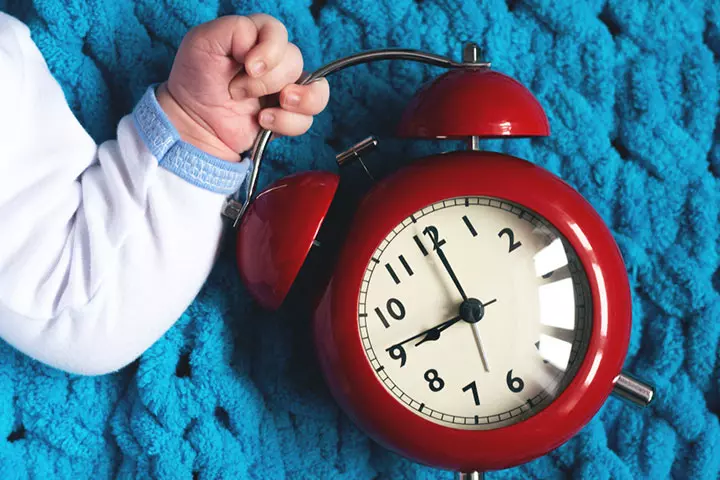
These steps help minimize the risk of mastitis/breast infection, which is one of the causes of itchiness of the breast. Moisturizing the skin helps minimize the irritation caused by stretch marks, which do not have a cure.
Frequently Asked Questions
1. Are there any home remedies for itchy breasts when breastfeeding?
Establishing a skincare routine, wearing breathable clothing, using mild soap, moisturizing, staying hydrated, avoiding heat/sweat and irritants/allergens, managing stress, ensuring your baby latches on to your nipples properly, and avoiding scratching/rubbing can help treat itchy breasts during breastfeeding (7). Studies have also shown that applying olive oil, coconut oil, aloe vera, and breast milk helps relieve breast soreness and irritation (16). However, make sure to consult your doctor and use high-quality products from reputed brands.
2. Are there any lifestyle changes that I should make to reduce or prevent itchy breasts when breastfeeding?
Pay attention to your diet and avoid common allergens such as peanuts, dairy, eggs, sugar, alcohol, and gluten to help reduce the likelihood of itchy breasts when breastfeeding (7).
3. How long does it take for the itchiness to go away after treating itchy breasts when breastfeeding?
Itchy breasts may take one to three weeks to heal with proper treatment. Flare-ups may occur for the rest of your life, although you can prevent them with the right measures (7).
4. Could hormonal changes cause itchy breasts when breastfeeding?
Estrogen and progesterone cause breasts to change. They can make nipples and breasts feel itchy or sensitive.
5. Could my itchy breasts when breastfeeding be related to a medical condition?
Yes, itchy breasts when breastfeeding could be related to breast eczema. It can be caused by a combination of factors, including immune system activation, genetics, environmental triggers, stress, and breastfeeding (7).
Itchy breasts while breastfeeding are bothersome if associated with conditions such as thrush, mastitis, and eczema. Fortunately, in most cases, itchy breasts do not require a diagnosis and subside by themselves; however, it is important to seek a doctor’s advice if your itchiness interferes with breastfeeding, is accompanied by pain, or breast lumps. Keeping your breasts dry, wearing loose clothing, and moisturizing your nipples could help prevent the condition. In addition, antifungal medications and antibiotics might work in alleviating the itchiness.
Infographic: Risk Factors For Itchy Breasts While Breastfeeding
Postpartum breastfeeding issues, such as itching in the breasts, could cause pain and discomfort for the mother. Although following specific preventive measures help alleviate itchiness, this infographic shares the risk factors that might increase the occurrence of itchy breasts during breastfeeding. Illustration: Momjunction Design Team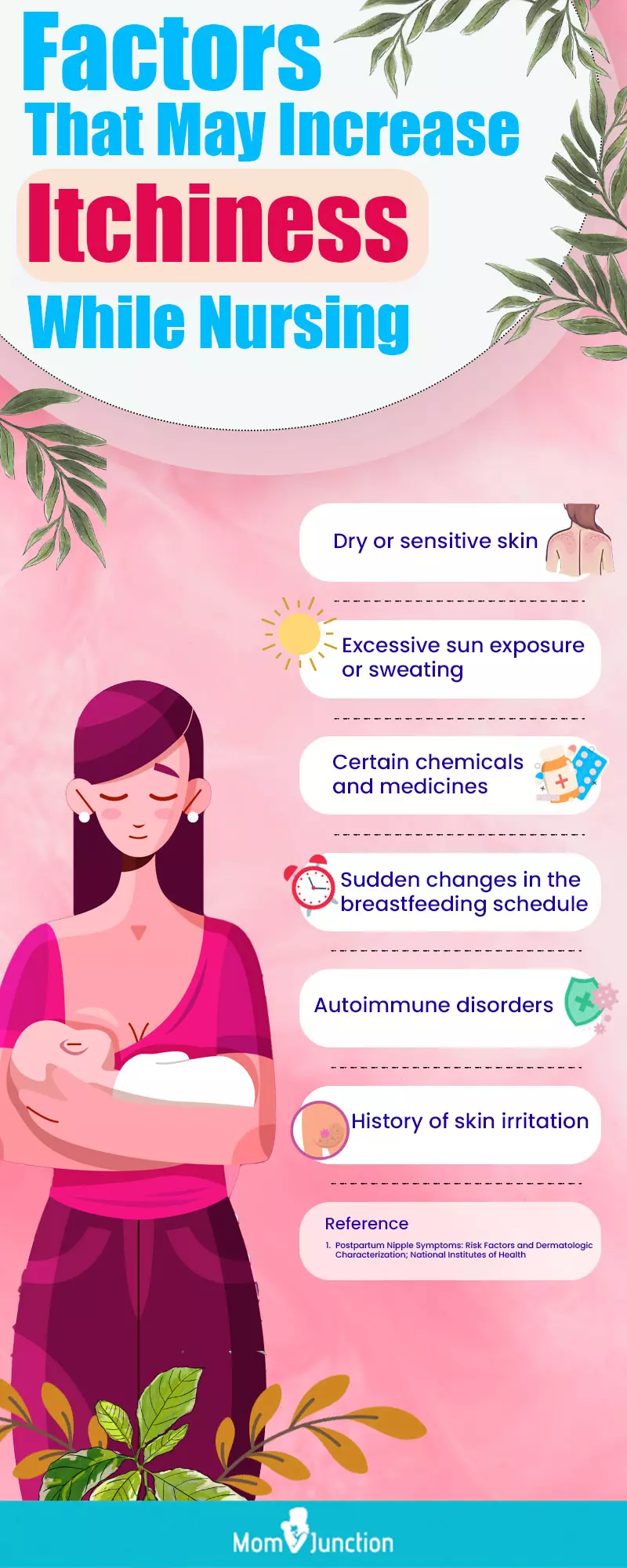
Illustration: What Causes Itchy Breasts While Breastfeeding And How To Deal With It

Image: Dall·E/MomJunction Design Team
References
- Candidiasis; National Organization for Rare Disorders
https://rarediseases.org/rare-diseases/ - Candida or thrush of the nipple and breast; Canadian Breastfeeding Foundation
https://www.canadianbreastfeedingfoundation.org/basics/candida_thrush.shtml - Mastitis; NHS
https://www.nhs.uk/conditions/mastitis/ - Breast infection; U.S. Department of Health and Human Services
https://medlineplus.gov/ency/article/001490.htm - What is Eczema?; National Eczema Association
https://nationaleczema.org/eczema/ - Contact Dermatitis; National Eczema Association
https://nationaleczema.org/eczema/types-of-eczema/contact-dermatitis/ - Breast Eczema; Cleveland Clinic
https://my.clevelandclinic.org/health/diseases/21960-breast-eczema - Pregnancy and Skin Changes; University of Rochester Medical Center
https://www.urmc.rochester.edu/encyclopedia/content?contenttypeid=134&contentid=7 - M.F.Potter; Parasitic Mites of Humans; University of Kentucky College of Agriculture
https://entomology.ca.uky.edu/ef637 - Ringworm (Tinea); Harvard Health Publishing
https://www.health.harvard.edu/a_to_z/ringworm-tinea-a-to-z - Scabies; Cedars Sinai
https://www.cedars-sinai.org/health-library/diseases-and-conditions/s/scabies.html - Heat rash; Health direct
https://www.healthdirect.gov.au/heat-rash - Breastfeeding and thrush; NHS
https://www.nhs.uk/conditions/baby/breastfeeding-and-bottle-feeding/breastfeeding-problems/thrush/#:~:text=Thrush%20in%20breastfeeding%20women%20istablets%20to%20clear%20the%20infection. - Management of Mastitis in Breastfeeding Women; American Family Physician
https://www.aafp.org/pubs/afp/issues/2008/0915/p727.html - Reda M. Hables and Ebtsam S. Mahrous; Effect of Olive Oil, Coconut Oil, Breast Milk on Nipple Soreness among Lactating Mothers: Comparative Study; (2021); Egyptian Journal of Health Care.
https://www.uhb.edu.sa/Lists/Books%20and%20Articals/Attachments/1511/BookFile-%203-%20breast%20sorness.pdf
Community Experiences
Join the conversation and become a part of our nurturing community! Share your stories, experiences, and insights to connect with fellow parents.
Read full bio of Melissa Kotlen

Dr. Daniel Gomez is a Fellow of the American College of Obstetricians and Gynecologists and the American College of Surgeons. He is also a Diplomate of the American Board of Obstetrics and Gynecology. Dr. Gomez received his medical degree from Ponce School of Medicine in Puerto Rico and completed his residency training in ob/gyn at Lehigh Valley Health Network in Allentown, PA. He has over 12 years of experience and currently works at the Institute For Women’s Health and Body, Coral Springs, Florida.
Dr. Daniel Gomez is a Fellow of the American College of Obstetricians and Gynecologists and the American College of Surgeons. He is also a Diplomate of the American Board of Obstetrics and Gynecology. Dr. Gomez received his medical degree from Ponce School of Medicine in Puerto Rico and completed his residency training in ob/gyn at Lehigh Valley Health Network in Allentown, PA. He has over 12 years of experience and currently works at the Institute For Women’s Health and Body, Coral Springs, Florida.
Read full bio of Rohit Garoo
Read full bio of Dr. Ritika Shah
Read full bio of Anindita Ghatak









